Suffolk Sheep
- February 8, 2024
- 0 comment
Suffolk sheep, known for their distinctive black face and legs, are a prominent and highly regarded breed in the world of livestock farming. Originating in East Anglia, England, in the late 18th century, they have earned a reputation for their excellent meat-producing qualities. These medium to large-sized sheep are well-muscled, making them ideal for meat production. Suffolk ewes are renowned for their strong maternal instincts, leading to high lambing percentages.
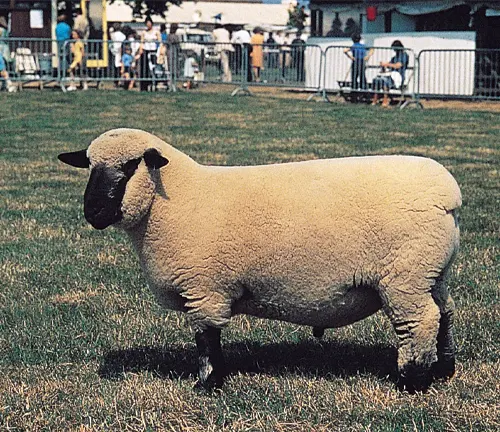
The breed’s lambs grow rapidly, boasting a desirable meat-to-bone ratio that is highly prized by both farmers and consumers. Suffolk sheep play a pivotal role in the agriculture industry, particularly in commercial farming, where their adaptability, ease of management, and superior meat quality make them a top choice. These sheep require proper care, including a balanced diet, shelter, and healthcare, to ensure their well-being and productivity. Overall, Suffolk sheep are a remarkable and valuable breed with a rich history and a bright future in the world of agriculture.
| Characteristic | Description |
|---|---|
| Origin | East Anglia, England |
| Size | Medium to Large |
| Coat Color | White with a Black Face and Legs |
| Horns | Typically None (Polled) |
| Body Structure | Sturdy and Muscular |
| Fertility | High Lambing Percentage |
| Meat Quality | Lean and Flavorful |
| Adaptability | Thrives in Various Climates |
| Lifespan | 8 to 12 Years |
| Primary Use | Meat Production |
| Wool Quality | Medium Quality (Primarily Raised for Meat) |
| Care Requirements | Proper Nutrition, Shelter, and Healthcare |
| Temperament | Generally Docile and Easy to Handle |
| Commercial Farming Appeal | Ease of Management and High Meat Quality |
| Popular Breeding Choice | Purebred Suffolk Rams often used for breeding |
| Unique Appearance | Distinctive Black Face and Legs |
A Comprehensive Guide to This Remarkable Breed
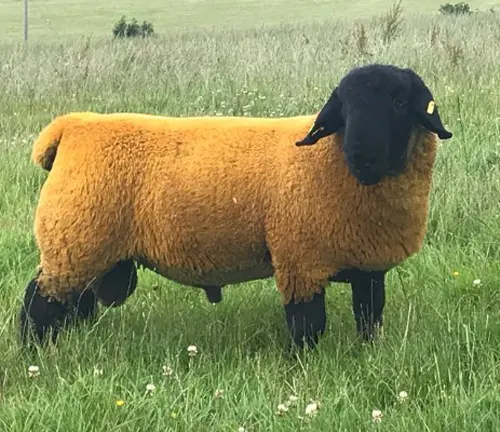
Suffolk sheep, often referred to as “the black-faced sheep of the sheep world,” are a popular breed among farmers and livestock enthusiasts. Known for their distinctive appearance and remarkable characteristics, Suffolk sheep have earned a special place in the hearts of those involved in the agricultural industry. In this article, we will delve deep into the world of Suffolk sheep, exploring their history, physical characteristics, breeding, and much more.
The History of Suffolk Sheep
The history of Suffolk sheep is a captivating tale that takes us back to the late 18th century in the scenic region of East Anglia, England. It was during this time that the breed’s development commenced, driven by the ambition to create a sheep variety renowned for its exceptional meat-producing qualities.
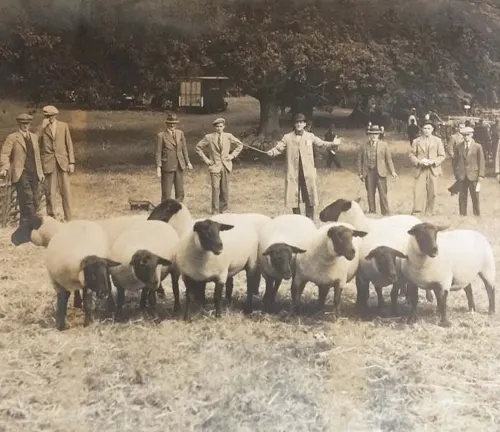
The narrative of Suffolk sheep’s origin revolves around meticulous and strategic breeding. The journey began with the crossing of Southdown and Norfolk Horned ewes with a Southdown ram. This deliberate breeding program aimed to merge the desirable attributes of both breeds, resulting in a sheep that would excel in meat production.
Physical Characteristics
Suffolk sheep are known for their striking black face and legs, which contrast beautifully with their white, medium-wool fleece. These sheep are of medium to large size, with a well-muscled body that makes them ideal for meat production. Their distinctive appearance sets them apart from other sheep breeds, making them easily recognizable in any flock.
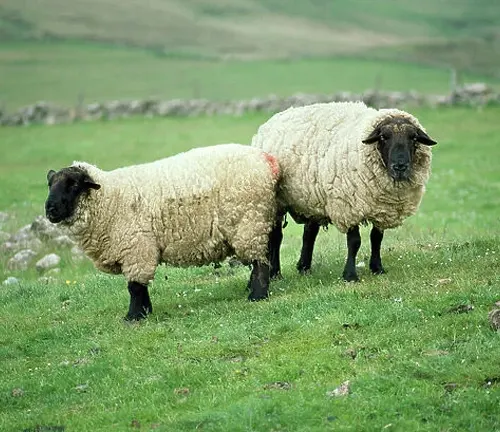


- Distinctive Appearance: Suffolk sheep are known for their striking black face and legs, which contrast dramatically with their white, medium-wool fleece. This distinct coloration sets them apart from many other sheep breeds and makes them easily identifiable.
- Muscular Build: Suffolk sheep possess a sturdy and muscular frame, making them particularly well-suited for meat production. They have broad shoulders and a deep, well-developed body, which contributes to their impressive muscle mass.
- Hornless (Polled): Most Suffolk sheep are polled, meaning they do not have horns. This trait enhances their safety and ease of handling, making them more practical for farmers and handlers.
- Medium Wool: While Suffolk sheep are primarily raised for meat production, they do have a medium-wool fleece. The fleece is typically white, and its quality is considered to be of medium grade for fiber purposes.
- Size: Suffolk sheep are classified as medium to large-sized sheep. They exhibit a robust and substantial physique, with mature rams being larger than ewes.
- Straight Legs: Their legs are strong and straight, which not only contributes to their muscular appearance but also enhances their mobility.
- No Wool on Head or Legs: Suffolk sheep have a distinctive feature where their black face and legs are devoid of wool. This characteristic highlights their unique coloration and adds to their overall visual appeal.
- Ewe Maternal Instincts: Suffolk ewes are known for their strong maternal instincts. They tend to be attentive mothers, ensuring the well-being of their lambs, which can be crucial for lamb survival and growth.
Breeding and Reproduction
Breeding Suffolk sheep is a meticulous process that aims to maintain the breed’s desirable traits. Farmers often use purebred Suffolk rams to mate with Suffolk ewes, ensuring that the offspring inherit the breed’s valuable characteristics. Suffolk sheep are known for their high fertility rates, making them a preferred choice for commercial sheep farming.
Selective Breeding
Suffolk sheep breeding begins with careful selection of breeding stock. Farmers typically use purebred Suffolk rams to mate with Suffolk ewes to ensure that the offspring inherit the breed’s valuable characteristics. This selective breeding process aims to maintain or enhance traits like muscularity, growth rate, and meat quality.
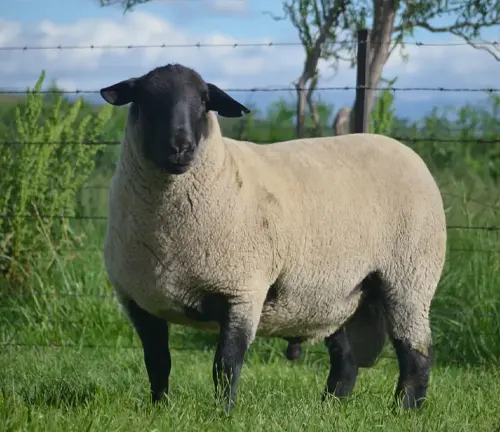
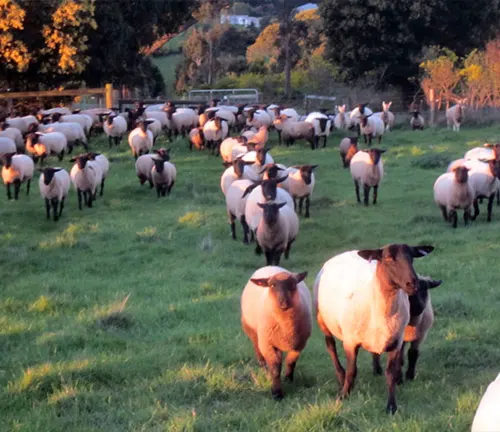
Estrous Cycle
Suffolk ewes, like other sheep breeds, go through an estrous cycle, commonly known as the “heat” cycle. The estrous cycle lasts approximately 17 days, with ewes being in heat for about 30-36 hours. During this time, they are receptive to mating.
Ram Selection
Selecting a suitable Suffolk ram for breeding is essential. Rams should be healthy, free from genetic defects, and exhibit the desired physical traits for the breed. They play a significant role in passing on genetic characteristics to the offspring.
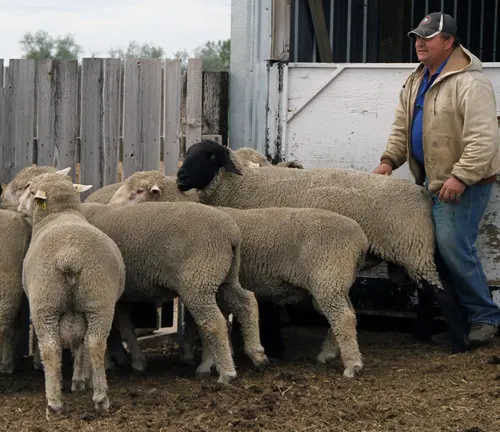

Breeding Season
Suffolk sheep typically have a specific breeding season, commonly in the fall or early winter, when day length decreases. This is a natural response to changing daylight hours and ensures that lambs are born in more favorable spring or early summer conditions.
Mating Process
Mating is carried out through natural service, where the ram is introduced to the ewes during their heat cycle. Ewes in heat may exhibit signs such as increased vocalization and tail wagging, indicating their readiness for mating.
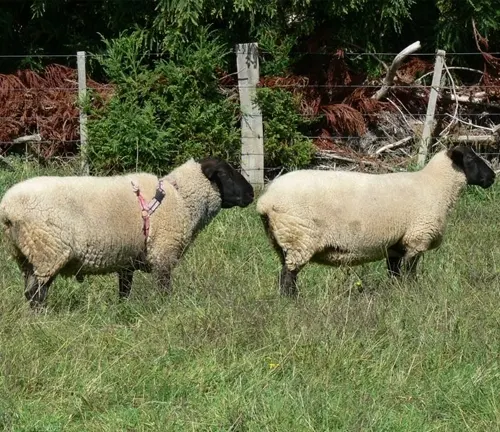
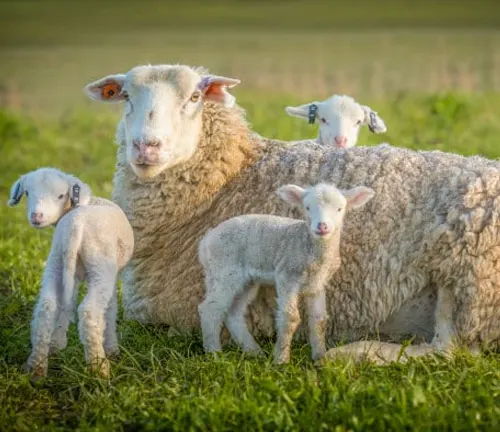
Gestation Period
The gestation period for Suffolk sheep lasts approximately 147 to 150 days (about 5 months). During this time, it is essential to provide pregnant ewes with proper nutrition and care to support the development of healthy lambs.
Lambing
Suffolk ewes are known for their high fertility rates, often giving birth to twins or even triplets. Lambing is a crucial period, and farmers must monitor ewes closely to ensure a successful birth and the well-being of the lambs.
Lamb Care
After lambing, it’s essential to provide proper care for both the ewes and their lambs. This includes ensuring that the lambs receive colostrum (first milk) for essential nutrients and immunity, as well as providing shelter and a clean, safe environment for mother and offspring.
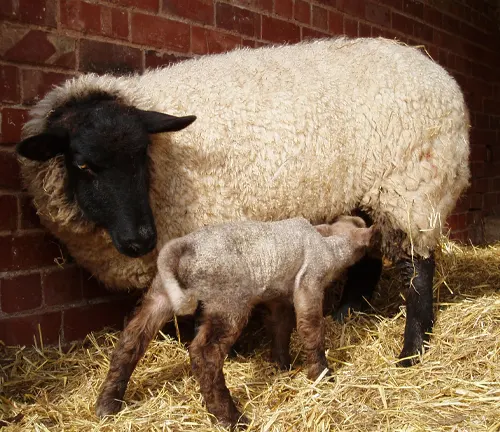
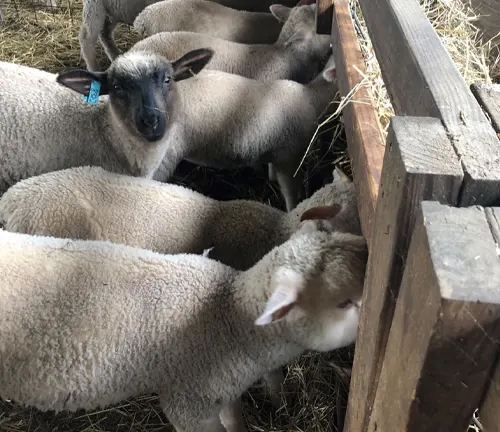
Weaning
Lambs are typically weaned at around 60 to 90 days of age, depending on their growth and the management goals of the farm.
Suffolk Sheep in Agriculture
Suffolk sheep play a vital role in the agriculture industry, primarily due to their meat-producing capabilities. The breed is renowned for its succulent, lean meat, making it a preferred choice for both farmers and consumers. The meat from Suffolk sheep is tender and flavorful, making it a top choice for various culinary applications.
Commercial Farming
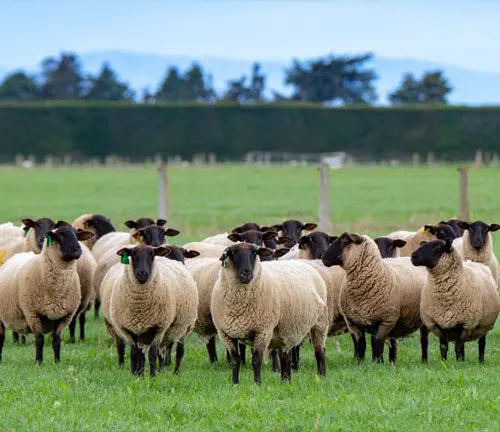
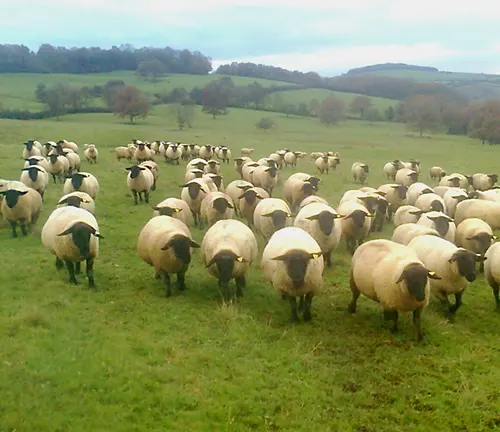
- Many commercial farms focus on breeding and raising Suffolk sheep for meat production.
- The breed’s adaptability and ease of management make it an attractive option for large-scale farming.
- Suffolk sheep are known for their ability to thrive in a range of climates, further enhancing their appeal to farmers worldwide.
Caring for Suffolk Sheep
Proper care and management are crucial for the health and well-being of Suffolk sheep. Farmers and livestock enthusiasts must provide adequate nutrition, shelter, and healthcare to ensure the breed’s optimal growth and productivity.
Feeding

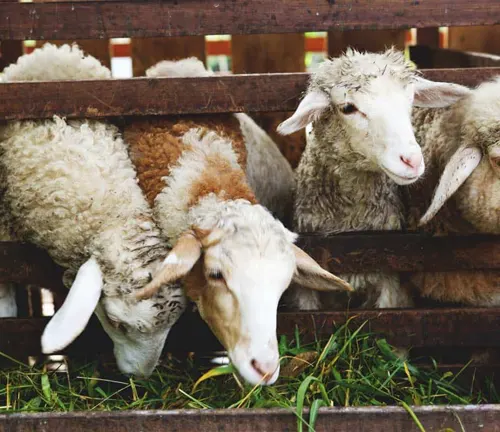
- Suffolk sheep require a balanced diet rich in nutrients to support their rapid growth.
- High-quality forage and supplementary feed are essential for meeting their dietary needs.
- Adequate access to clean water is vital for their overall health.
Shelter
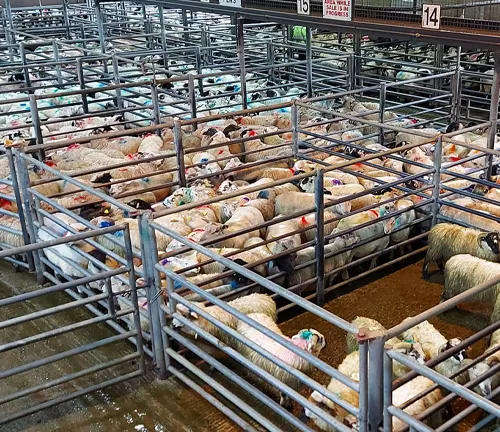
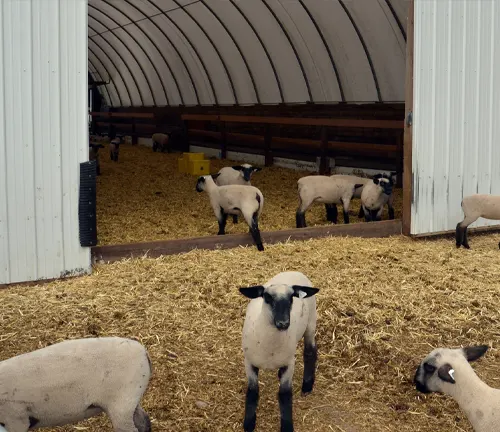
- Providing shelter from extreme weather conditions is essential to keep Suffolk sheep comfortable.
- Well-ventilated barns or sheds help protect the flock from rain, wind, and extreme temperatures.
- Proper bedding and clean living conditions are crucial to prevent health issues.
Healthcare
- Regular veterinary care, vaccinations, and deworming are necessary to keep Suffolk sheep healthy.
- Monitoring for signs of illness and addressing them promptly is essential for disease prevention.
- Ensuring a stress-free environment promotes overall well-being.
Different Species
Suffolk Sheep, as a breed, is distinct and does not have different species. However, within the Suffolk Sheep breed, there can be variations in terms of individual sheep’s characteristics, such as size, coat quality, and conformation.
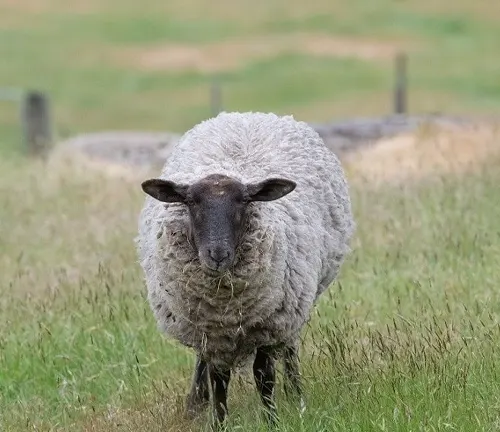
Frequently Asked Question (FAQs)
1. What is the Origin of Suffolk Sheep?
Suffolk sheep originated in East Anglia, England, during the late 18th century. They are a result of carefully planned breeding programs that aimed to create a sheep breed known for its meat quality and adaptability.
2. What Makes Suffolk Sheep Stand Out?
Suffolk sheep are distinguished by their white wool and black face and legs. This striking appearance sets them apart from other breeds and makes them easily recognizable.
3. Are Suffolk Sheep Suitable for Meat Production?
Yes, Suffolk sheep are highly regarded for their meat-producing capabilities. Their meat is lean, tender, and flavorful, making it a preferred choice among farmers and consumers.
4. How Do You Care for Suffolk Sheep?
Proper care involves providing them with a balanced diet, shelter, and regular healthcare. Ensuring access to clean water and maintaining clean living conditions is crucial for their well-being.
5. What is the Lifespan of a Suffolk Sheep?
On average, Suffolk sheep can live for 8 to 12 years with proper care and management.
6. Are Suffolk Sheep Suitable for Small-Scale Farming?
Yes, Suffolk sheep can be raised on small farms, provided they receive adequate attention and care. Their adaptability makes them suitable for various farming scales.
7. Do Suffolk Sheep Have Horns?
Suffolk sheep are typically polled, meaning they do not have horns. This feature enhances their safety and ease of handling.
8. Can Suffolk Sheep Adapt to Hot Climates?
While Suffolk sheep are adaptable, extremely hot climates may require additional measures to keep them comfortable, such as shade and proper ventilation.
9. Are Suffolk Sheep Raised for Wool?
Suffolk sheep are primarily raised for meat production, and their wool is considered of medium quality for fiber purposes.
10. Where Can I Find Suffolk Sheep for Purchase?
You can find Suffolk sheep for sale through local breeders, agricultural fairs, or online livestock marketplaces.




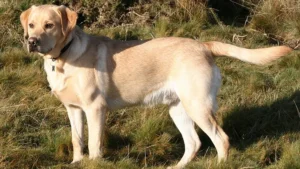
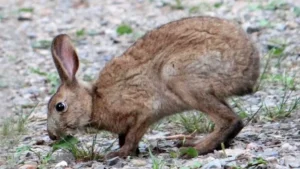
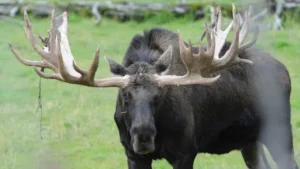
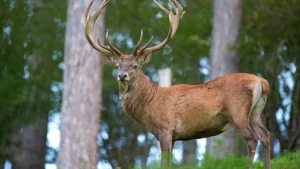






Leave your comment